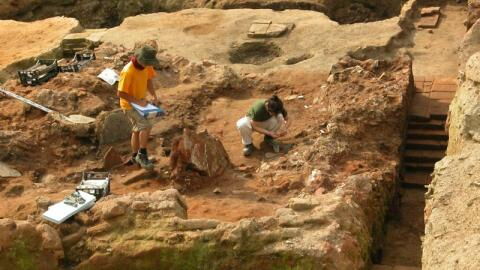Romans considered it a gateway to the underworld. This mysterious portal had the amazing ability to kill animals but spare the priests that lead them to sacrifice. 2,200 years old, this grotto was rediscovered by archaeologists from the University of Salento seven years ago in the ancient city of Hierapolis, in Turkey. Nowadays, scientists finally know how it was committing these crimes.
Discover our latest podcast
A door on the brink of the underworld
Known as Plutonium, in tribute to the God of the underworld Pluto, it was a place of sacrifice for priests. These were practices in an arena in which the sinister door released cloudy vapours. The eunuch priests took their bulls there as an offering and once in the arena, the animals would be suffocated, whilst the religious came out unscathed, a testimony of their omnipotence.
The Greek historian Strabon, who assumed that this immunity of the priests was due to their castration, wrote at the time that: “This space is filled with a cloudy and dense vapour that makes it only just possible to see the sun. Every animal that it penetrated, suffered a sudden death. I have sent sparrows there and they instantly took their last breath before they died.” Nowadays, every bird that has the unfortunate idea to approach the arena, suffocates to death.
The blame lies under the earth
According to the volcanologist Hardy Pfanz, it was necessary to look under the earth for the cause. In fact, there is a deep geological crack just beneath the surface of the region which gives off considerable quantities of carbon dioxide. With his team, they travelled to the site to measure the concentration of this gas and have discovered the existence of a CO2 lake covering the ground of the arena up to 40 centimetres high.
These toxic vapours prove to be particularly concentrated at daybreak, after having built up during the night and before being cleared up during the day. However, in a grotto protected by the sun and wind, the CO2 concentration doesn’t drop below 86%. They explain that the priests probably practised their rituals during the mornings or after the sun goes down for a more spectacular effect.
“Whilst the bull was in the gas lake with its mouth and nostrils at between 60 and 90 centimetres high, the priests (Galli) were stood high enough to keep their nose and mouth above the toxic level of this breath of infernal death”, writes the team of the article. This discovery allows us to assume that the other “gateways to hell” were created in a similar way.















